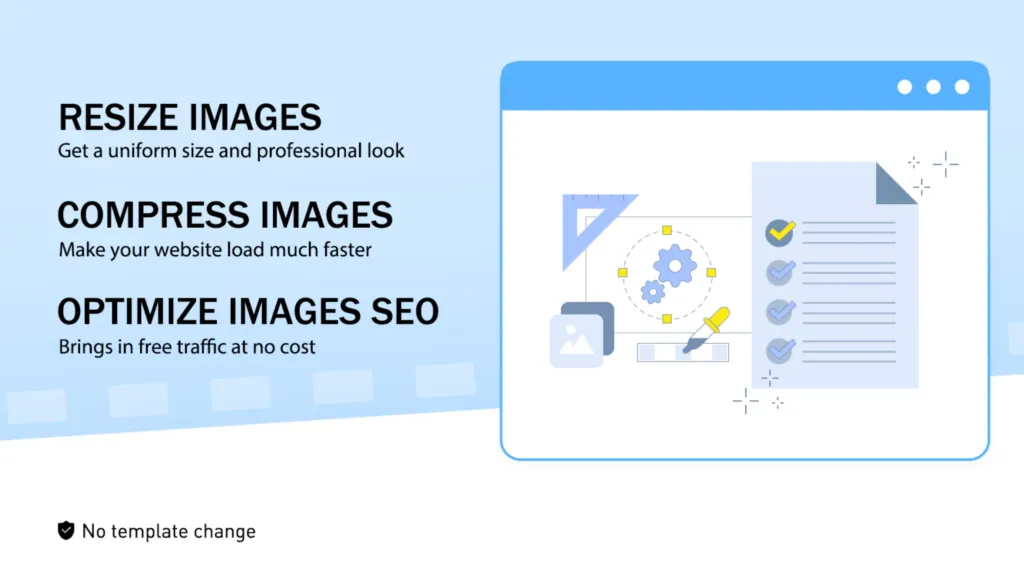Let’s chat about something super crucial yet often overlooked on your website—its performance. You know the drill: slow-loading pages are a total vibe killer. They shoo away visitors and get a thumbs down from search engines. Speed is the king in the digital realm, and a nifty trick to boost your site’s speed is shrinking those image sizes down. Yep, it’s that simple.
Contents
Why Image Size Matters
Big, chunky images are usually the culprits behind a sluggish website. Reducing these images essentially makes your site lighter and quicker, which means better user experience and SEO. It’s a win-win!
Different Image Formats and Their Impact
- JPEG: Great for photos as it balances quality and file size well.
- PNG: It is ideal for graphics needing transparency, though it can get bulky.
- GIF: Fun for animations but can slow things down if you go overboard.
- WebP: The new hero in town, offering better compression for faster loads without sacrificing quality.
Picking the right format is crucial. It’s all about finding the best fit for your needs to keep your website zippy.
The Role of Image Size in Website Performance
Here’s the deal: bigger images can bog down your site. Google says if your page load time jumps from one to ten seconds, the likelihood of a mobile visitor bouncing spikes by 123%. Ouch! Keeping your images small ensures quicker loads, happier visitors, and more engagement.
Choosing the Right Tool for Image Compression
When it comes to compressing those hefty files without losing quality, tools like TinyPNG and Kraken.io are lifesavers. TinyPNG is awesome for PNGs and JPEGs, keeping them crisp even with dramatic size reductions. For those looking for an accessible option, Adobe offers a free image size reducer that is perfect for quick adjustments without a steep learning curve. Kraken.io is another gem, especially with its API for those who love a bit of coding.
How to Use an Online Image Size Reducer: A Walkthrough with TinyPNG
- Upload Your Image: Head to TinyPNG’s website, which has a straightforward interface. You can drag and drop your files or click to upload from your computer.
- Compression Magic: Once your images are uploaded, TinyPNG works, using smart compression techniques to shrink those files while keeping the visuals sharp.
- Download and Done: After compression, download your optimized images. TinyPNG shows how much you’ve reduced their size, which is pretty satisfying to see.
Including a screenshot or a quick diagram could help you nail the process even better!
Integrating Image Compression into Your Web Development Workflow
Automating image optimization can revolutionize your web development process. With plugins like WP Smush or EWWW Image Optimizer for WordPress, images get compressed automatically as you upload them, keeping your site speedy from the start.
Advanced Strategies: CDNs and Caching
Consider using Content Delivery Networks (CDNs) and browser caching to level up your image optimization game. CDNs spread your content across various servers worldwide, making downloads faster for users everywhere. Browser caching stores images locally in a visitor’s browser, so those images load super fast on their next visit.
Real-Life Wins
Several websites have boosted their performance dramatically with image size reduction:
- Online Retailer: A major player cut their load times by 35% by automating image compression, which also lifted their SEO rankings.
- Popular Blog: This site slashed its bounce rates by half using a CDN and aggressive caching, thanks to quicker loading times.
Conclusion
Reducing image sizes isn’t just about speeding up your site; crafting a smoother, more engaging user experience. By staying sharp on image optimization, you can keep your site performing like a champ and keep visitors returning for more.

